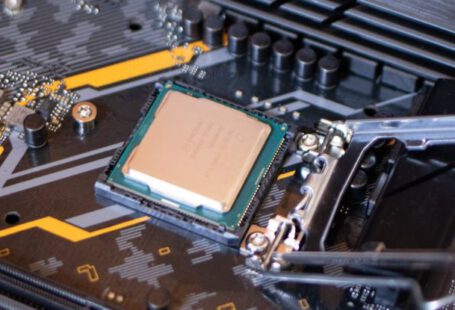Virtual reality (VR) has become increasingly popular in recent years, offering users an immersive and interactive experience that blurs the line between the digital world and reality. However, one of the key challenges that VR enthusiasts face is the demanding nature of this technology on their PCs. Understanding why virtual reality is more demanding on your PC can help you optimize your setup for a smoother and more enjoyable VR experience.
**The Complexity of Virtual Reality Technology**
Virtual reality technology is designed to create a realistic and immersive environment for users by simulating sensory experiences, such as sight, sound, and touch. This requires a significant amount of computing power to render high-resolution graphics, process real-time inputs, and deliver a seamless experience.
**High Frame Rates and Resolution**
One of the primary reasons why VR is more demanding on your PC is the requirement for high frame rates and resolution. In order to create a convincing sense of presence in a virtual environment, VR headsets need to display images at a high frame rate to avoid motion sickness and provide a smooth experience. This means that your PC must be capable of rendering and delivering these frames quickly and efficiently.
**Real-Time Rendering and Latency**
Another factor that contributes to the demanding nature of VR on your PC is real-time rendering and low latency. VR applications need to respond to user inputs instantaneously to maintain immersion and prevent motion sickness. This requires your PC to process and render graphics, audio, and other data in real-time without any noticeable delay, which can be challenging for less powerful hardware.
**Multiple Sensors and Tracking Devices**
In addition to rendering high-quality graphics and minimizing latency, VR systems often require multiple sensors and tracking devices to track the user’s movements and position in physical space. These sensors capture data that is used to update the virtual environment in real-time, adding another layer of complexity to the computational requirements of VR applications.
**High-Performance Components**
To meet the demanding requirements of virtual reality, your PC needs to be equipped with high-performance components, such as a powerful graphics card, a fast processor, and an ample amount of memory. These components work together to ensure smooth and responsive performance, allowing you to enjoy VR experiences without any lag or stuttering.
**Optimizing Your PC for Virtual Reality**
If you want to enjoy a smooth and immersive VR experience, it is essential to optimize your PC for virtual reality. This can involve upgrading your hardware, tweaking settings, and ensuring that your system meets the minimum requirements for the VR applications you want to use. By investing in high-quality components and keeping your system up to date, you can enhance the performance of your PC and enjoy a more seamless VR experience.
**In Summary**
Virtual reality offers a unique and engaging way to interact with digital content, but it also places significant demands on your PC due to the complexity of the technology involved. By understanding the reasons why VR is more demanding on your PC, you can take steps to optimize your setup and ensure a smoother and more enjoyable VR experience. From high frame rates and resolution to real-time rendering and tracking devices, there are multiple factors that contribute to the demanding nature of VR on your PC. By investing in high-performance components and keeping your system up to date, you can enhance the performance of your PC and unlock the full potential of virtual reality technology.





